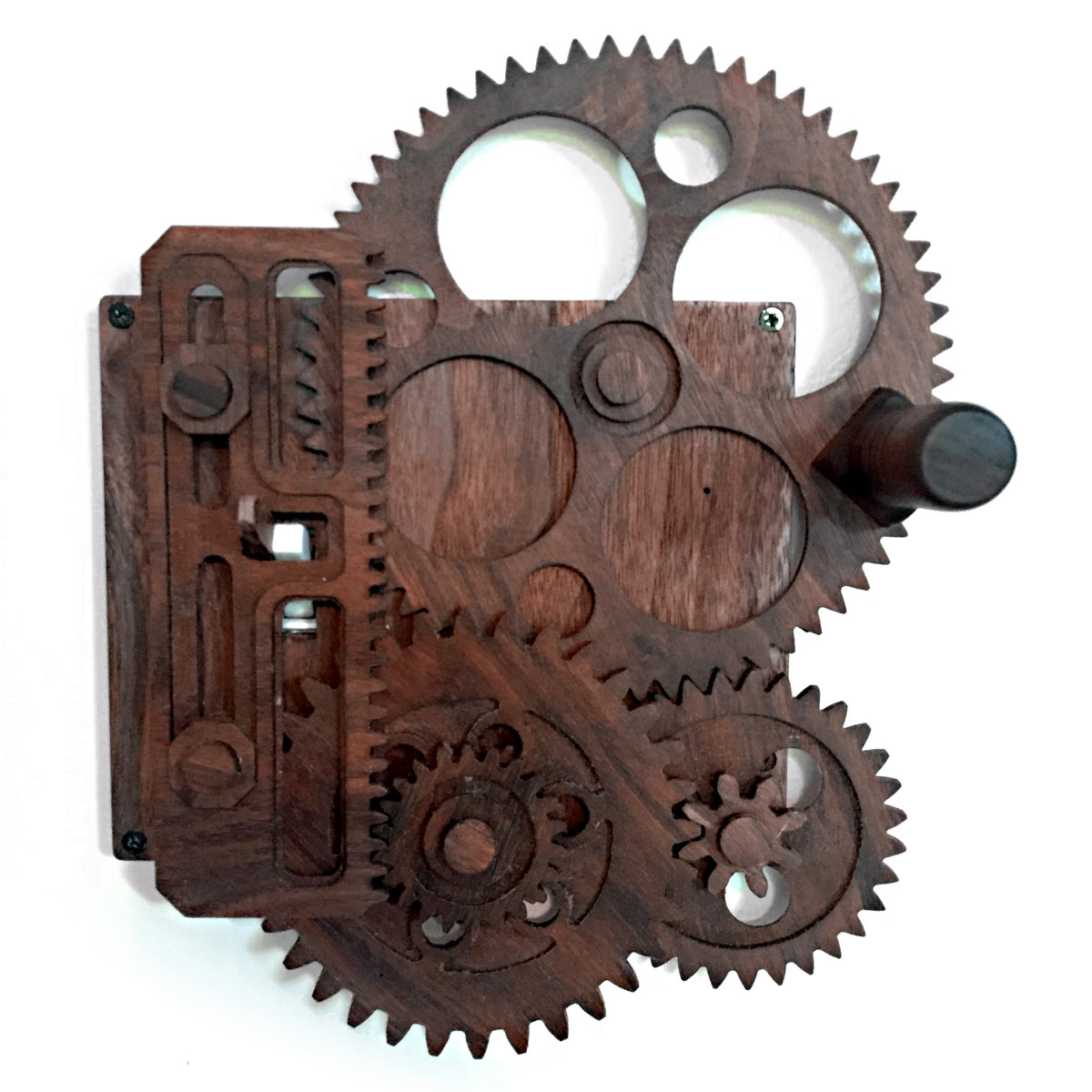I was initially inspired to make a gear-driven light switch when I saw one that a friend of mine bought online, which I later learned was inspired by a “light switch complicator” that Ernie Fosselius showed at Maker Faire. You turn the crank, and a series of gears translates a linear slider that flips the switch.
I found this to be a relatively easy project to design. It looks complicated, but with the help of gear creator sites like geargenerator.com, the hardest part was creating a layout to keep everything compact. You can cut the files on a CNC or a laser cutter in hardwood or whatever materials you think look nice. Here’s my version in solid walnut. It’s a fun project that can be done in an afternoon.







